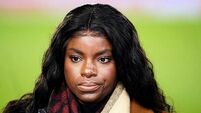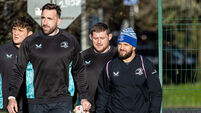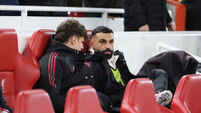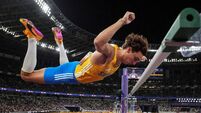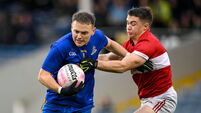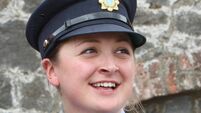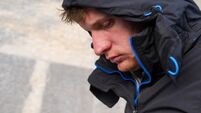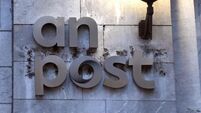The Big Interview: Putting sport in a good place
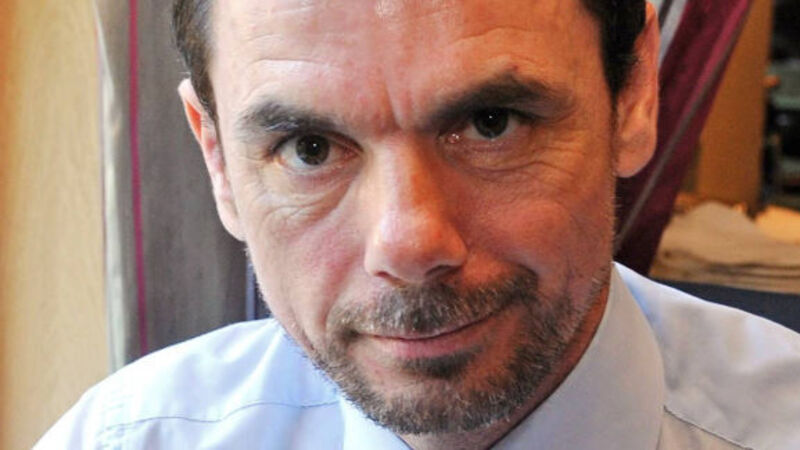
Well away from the lights and the international podiums our athletes are increasingly gracing to stand on, Gary Keegan and his colleagues in their own quiet but sure way are transforming the culture of Irish Olympic sport.
Kenny Egan can tell you the day Irish boxing entered another space, which would then take it to another stratosphere.
It had started out just another morning up in the National Stadium, tipping around doing a bit of skipping and pad work and a whole lot of hanging around with so many boxers about and just the one ring.
Then the trim figure of Gary Keegan strode in wearing his shirt and tie and declared that he was starting a High Performance Unit and you’d better believe those were in capitals.
He produced a line of red tape, ran it across the floor, then stood on one side while all the boxers stood on the other. On his side was high performance. He wasn’t yet a high performance operator himself but he had committed to being one and was now inviting, demanding, others to join him. He explained to them what a world-class boxer looked like. He outlined to them what a world-class boxer was NOT like; instantly, they recognised themselves. He was offering a way forward. Every excuse in the book, he’d be removing, but in turn they’d have to literally sign up to a 24-hour athlete regimen and mindset.
Did they want to cross the line? “I liked what I was hearing,” Egan would recount in his autobiography. “I was on a grant at the time and getting paid to train so I said ‘Let’s get serious about this and see what I can make of myself.’ I stepped over the line, signed the piece of paper and that was it.”
Five years later Egan would stand on a podium in Beijing, as would a couple of other colleagues, Darren Sutherland and Paddy Barnes, the product of one of the most successful boxing programmes in world amateur boxing.
As for Keegan, well just after those 2008 Olympics, he was asked to pretty much help the rest of Irish Olympic sport attain high performance. To become the technical director of the fledgling Irish Institute of Sport. To help bring it and Irish sport over that red tape and into that space.
“That space.” Whether he’s aware of it or not, it’s a term Gary Keegan uses 52 times in fact through one absorbing 90-minute stretch of a recent conversation with him. Just for variety, he’ll replace “space” with “place”, another word he uses frequently. And as you listen to him in his office up in the Institute’s politburo-style building out in Abbotstown, you’re left in no doubt the space and place that he envisages Irish sport.
In his eyes there are no excuses. The size of the country, your resources — get around it and get ahead. Keegan is loath to use the example of boxing but Billy Walsh isn’t and he tells the story of when they were starting out. Keegan, on behalf of the IABA, had applied for a grant of €1.1 million from the Sports Council but was given only a fifth of it. That wasn’t enough to accommodate fighters from down the country in even B&Bs. Anyone else would have reversed their plans to have their unit operate full-time out of the National Stadium. Instead the boxers slept in sleeping bags in the Stadium’s ring. Then they made a makeshift attic where they could bunk. They found a way. And that’s the attitude Keegan’s striving to make pervasive right across Irish sport.
“If you’re in that space (of having excuses), you better leave the space. Leave it now, please! Because whatever resources you have, you’ve got to get more out of it. Our margin of error is much tighter than the bigger talent pools like the UK and Australia. But just because they have more resources doesn’t mean they’re absolute efficient with those resources. Sure we need more resources on top of the resources we have but that should not be our primary focus. The focus right now is to be more respectful of the resources we have and prove that we’re worth greater investment.
“So for anyone holding down coaching jobs or performance director jobs (within the national governing bodies) who think we can’t do it, then I’d ask them to exit the building. We have to believe that the athletes we have can realise greater potential. We can’t be half pregnant on this. We’re either high performing or we’re not. You’re not going to compete at the top end unless you’re fully in. You can’t be half in the battle while trying to protect yourself from the potential failure that’s ahead and then wonder why you’re frustrated as to why you’re not progressing.
“So that’s what I’m looking for across from this seat — a guy that is fighting for the answer. Not someone who’s saying ‘Well if we had that.’ Why even be in the battle if you’re not going to throw a punch? I strongly believe that we’re throwing punches. We’ve now got to throw them smarter.”
For all his ambition, he’s mindful that they were nearly not throwing any at all. The Institute of Sport was set up in the final days of the Celtic Tiger, a new-born lamb struggling to find its legs in a harsh new world. The crash meant lot less money than anticipated. There were even doubts whether it would have any money or existence at all. Keegan had just turned down the job of leading GB boxing into the London Olympics and could easily have bemoaned his decision to stay at home. But when the government of the day made a commitment that the Institute was here to stay, Keegan was up for the fight.
He’d operated in choppy waters before. Ever before he worked as a volunteer and professional in Irish boxing or worked in the army or ran his own successful delivery van business, Keegan worked in the merchant navy. He was 16 when he left home in Dublin on the Irish Maple. He’d see a lot of the world, including the Suez Canal where the tension of the Egyptian-Israeli conflict still lingered in the air (“You could see the guns buried into the white-sand hills. It felt eerie but not dangerous”).
But the real education was in how his colleagues operated.
“You had the officer group above deck and then below deck the galley boys and deckhands and pantry boys. There were clear rules we had to abide by. We had a report card in terms of our performance and behaviour.
“Because that ship had to be cared for by its crew. It was 26 tonnes of steel in a caustic sea that was trying to eat away at it.”
Keegan started out in the kitchen before working his way up. Every Sunday the captain would come down and inspect it with a white glove. If there was as much as a whiff of dust or dirt on a steel shelf or pot, you’d failed the inspection. Such standards and conscientiousness would stay with Keegan.
That’s why the Institute’s mission statement agrees with him: “to support Irish sports to reach world podiums by driving excellence in the high performance system through the delivery of world-class services.”
In the past that had been left to the Irish Sports Council, but there was an acceptance that John Treacy and company had enough to be dealing with and there needed to be a faster ship. So the Institute took over that remit as both an offshoot and partner of the Sports Council.
rom the beginning Treacy and Keegan clicked but other key relationships had to be cultivated.
Probably the key constituency were the national governing bodies of the 17 Olympic sports as well as the Paralympic movement. It would be wrong to say that Keegan encountered resistance but there was definitely an adjustment period for everyone. To learn the needs of the various sports, the Institute had to ask questions. A lot of the sports weren’t used to being asked questions.
“It also meant a lot more detail and work was required (from the NGBs), and who likes more work? But I think the way we engaged with people they came to realise that we weren’t there to criticise them but to understand and support them. I’d think the sports would now largely say it’s been a positive process. We can definitely say that the sports have come a long way. There’s a lot more structure around their approach.”
The Institute itself has grown. Its service providers now have greater expertise and experience. If a carded athlete were to head out to its campus in Abbotstown on a particular day, he or she could meet up with a physiotherapist, a life skills coach, strength and conditioning coach, sport psychologist and physiologist, all of whom now have a clinic on site.
There are still gaps, Keegan accepts and identifies. The Institute could do with more top-notch nutritionists to underpin the gains made in strength and conditioning. Sport psychology support could be better too; at the moment too many of the qualified providers in that field are connected with third-level institutions and understandably reluctant to give up enough time to suitably immerse themselves in three or four high-performance sports and programmes. But Keegan feels the Institute and its providers are on the trajectory to becoming world-class. “We’re not quite there but we’re focused on the right things.”
Developing those providers as well as coaches are among those right things. And the beauty of it Keegan finds is that the scale of the country facilitates it.
“There are very few nations that can pull together all 17 sports and 40-odd coaches with a few days notice. We can get 180 athletes sitting across from each other the same way. In April we had a conference where in the one room we had 107 professionals in the area of leadership, coaching and sports science. So we can get people in the same room to solve a problem much quicker. That gives us a real competitive advantage. We’ve developed a community of sharing expertise and experience because we’re all trying to attain this Holy Grail — to consistently stand on world podiums.”
Another instance of this philosophy and coaches at work is the Hawkeye programme. Fairly early on the Institute copped that a current or aspiring Olympic coach in one sport was more likely to open up to an Olympic coach from another sport rather than his own. So what the Institute has established and co-ordinated is where a coach in squash will observe a coach in rowing for a day, seeing how he runs his sessions, communicates with his athletes and other service providers. Then that hawk will provide his learnings and feedback. A few months later then the pair will reverse roles.
Keegan has long had an appreciation of mentoring. When he was an amateur coach himself operating out in a club on the Clonsilla Road back in the 90s, he attended courses given by the likes of Mick Dowling, Mickey Hawkins and Austin Carruth. He particularly hit it off with Austin who’d welcome him under his wing and into his own club out in Drimnagh, and later draft Keegan onto the national coaching committee.
“Austin was never protective. He never pushed his knowledge on anybody, but all you had to do was ask. And one of the key things I picked up from him was that he allowed boxers to figure things out for themselves. He’d ask questions of his boxers like ‘Did you see that?’ ‘What would you do?’ Developing the boxer’s own sense of initiative was a big reason why (Olympic-winning son) Michael got more out of himself than most others would.”
So Keegan and the Institute are big into coaching the coaches. The Podium programme is for 17 coaches from 15 sports who expect to be in Rio. The Horizon programme is for the next wave of high performance coaches with a view to the 2020 Games and beyond. And one of the first things they learn is that there’s more to coaching than just coaching their sport.
They’ve been brought down to Templemore where the Gardaí with their expertise in problem-based learning have simulated big edge-of-chaos events. The coaches have had their cars checked by security, had to display accreditation at regular checkpoints; then inside be posed with a scenario like an athlete-actor freaking out the hour before competition and where a coach’s intervention is monitored both by camera and their peers. If you want to go to the big show, you have to be ready for the demands of the big show.
“They have to manage environments, parents, support staff and lead the team. Too often we see the role of a coach far too narrow. We think it’s someone who teaches someone else how to row a boat or throw a punch. We need to see them as managers and leaders at different times too.
“They now need to be able to communicate better: with their athletes and how to ask better questions and draw feedback; with service providers, and upwards into senior management.”
That’s why at this level full-time coaches and full-time performance directors are about your only option.
“You have to look at the global context and what we’re competing against. The nations that are winning the major honours mostly have professional structures around their athlete. So for us to come in and try to be successful with a voluntary structure just does not make sense. That’s not to undermine the importance of volunteerism. Billy (Walsh) and I were volunteers before we took the big jump and risk of giving up the day job and I’d like to think we delivered our job well whether we were paid or not. But a person who is paid has seven days a week to think about the bloody job. He has time to study it and understand it, especially those softer, subtle skills.”
That professional ethos can be difficult for sports to embrace. But it’s Keegan’s experience that the governing bodies and sports that are performing best are those where the chief executives and the performance directors co-operate best. And where there is a proper appreciation of talent identification. Take boxing with Jim Moore. Such was Jim’s knowledge of the youth and junior boxing scene he knew about every kid from the moment they walked into a gym at eight years of age. That familiarity would make their transition to senior boxing much quicker and smoother. Every NGB high performance programme should have and pay a Jim Moore.
“We need to realise that’s a no-brainer to get that place right,” Keegan concludes bluntly.
t’s been a particularly hectic last few weeks for Keegan as well as the Sports Council’s high performance director, Paul McDermott. Next year is the year before Rio. A qualification year. So last month the 17 Olympic sports and the Paralympics sports all submitted their preliminary performance plans to Keegan for 2015. Keegan gave each of them his feedback ahead of them presenting their case to the Sports Council for funding. In recent days it’s started to emerge who has received what. Rowing Ireland’s progress was acknowledged by the ISC giving them approval for three overseas camps next year after two seasons without any. Not every sport is going to be as happy though, which for Keegan is not only inevitable but fair.
“High performance is a tough culture because it’s not an inclusive culture. It’s an exclusive culture that needs to discriminate on the basis of performance. And that’s not to hurt anyone. That’s to ensure the resources we have are targeted at the right level. So we’ve to get better at making the hard calls.
“We’re very clear on what the return on investment is: European, world, Paralympic and Olympic medals. That is as black and white as you can get. So if we can get better at predicting a performance and identifying that an extra bit of investment and support is going to help achieve that, then we need to facilitate that. But it is not going to happen across all the sports. At times there will be guys [sports] treading water but high performance is a growth area. If you’re not going forward you’re going backwards. And if you’re not doing a great job with investment, then you need to realise someone else is willing and ready to take it off you and do a better job with it. We are also trying to provide an opportunity for younger sports to get a shot at the title. There can be no complacency.”
The same with the Institute. But already its progress can be measured by the growing number of European and world and Paralympic medals across the sports. That progress should be reflected in medals at Rio, and after that, Tokyo again and further Olympiads as the right systems and especially culture are further ingrained and improved.
It should be further in that space, as one of Irish sport’s great if invisible leaders might say. A good place to be.


